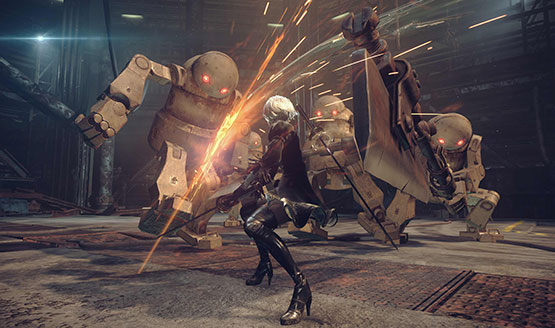When the original Nier came out in 2010, it was met with pretty mixed reviews. Some criticized the Drakengard spin-off for its poor visuals and repetitive side quests, while others praised the quality of its plot and soundtrack as well as its attempt at mixed gameplay. In spite of it not selling well, Nier became a cult classic and the dedicated support of its fans inspired the game’s producer Yosuke Saito to reunite with Nier creator Yoko Taro, as well as many of the others who worked on Nier, to create a sequel with Bayonetta developer Platinum Games.
Glory to Mankind
The story of Nier: Automata takes place thousands of years after the events of Nier. Humanity has fled to the moon after aliens and their machine army invaded and took over Earth. To fight back, a special army of androids called YoRHa were created to battle the machines on Earth alongside an already existing Resistance group composed of older-generation androids.
Much like the original, Nier: Automata’s full story is hidden behind the veil of multiple playthroughs, which the game calls “Endings.” Going through the first chapter of the story twice will unlock the second chapter and completing that opens up the third and final chapter, which in itself consists of two possible playthroughs and multiple endings. But unlike Nier, players don’t always control the same character in all of the game’s chapters or playthroughs, with the latter chapters giving players the option to choose the character route they’d like to play through first. The change makes this style of delivery feel less tedious and lets elements of the story be told and revealed through different perspectives, which opens up opportunities for more powerful storytelling.
In the game’s first playthrough, players take on the role of 2B (or YoRHa No. 2 Model B), a female combat android from YoRHA. She is often accompanied by 9S (YoRHa No. 9 Model S), a male scanner/hacker android who’s also from YoRHA. The two are sent down to Earth from the Bunker, the satellite headquarters of YoRHa that orbits Earth, to conduct missions for YoRHa as well as to assist the Resistance and its members.
Apart from the main storyline, the game features a large variety of side quests. Although the objectives of the side quests are quite typical, which include the usual fetch and kill quests, among others, their presentation and the attached stories give them a bit more flavor and give players additional, and sometimes deep and meaningful, glimpses into the game’s world and its inhabitants. Some of the side quests also offer additional storylines including one that involves one of the original game’s protagonists.
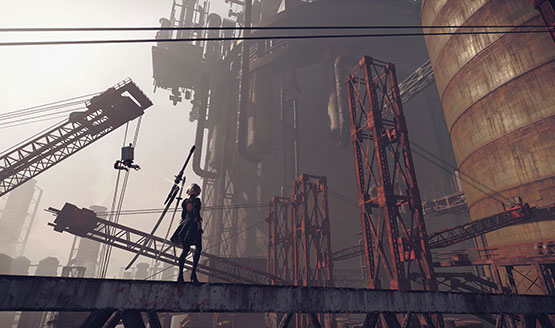
Although the game does feature several connections and references to Nier, including appearances from some of its iconic characters, playing the original isn’t necessary to grasp and appreciate the story of Nier: Automata. This gives both fans of the original and newcomers to the series equal opportunity to enjoy the game. Although, those already familiar with Nier’s story and characters will undoubtedly enjoy how Nier: Automata connects to the original.
In spite its onset dark tones and themes, Nier: Automata’s contrasting character and world design as well as its control of colors make the game’s elements and moments stand out beautifully. Many of its environments and enemies feature dull color tones and aesthetics, all of which make Akihiko Yoshida’s flashy main character designs easily stand out. And while the game is mostly played in color, it switches to black and white several times during the story as well as during several situations, instantly giving the game a different feel and weight.
Most of Nier: Automata is set in several geographically connected locations including a ruined city, an amusement park, a desert, and a forest, each with its own identity and tone. There are also several hubs where players can obtain quests, purchase items and upgrades, and more. Most of the locations can be traversed by foot but a fast-travel system and the ability to ride animals using an item is also made available. The game does have an issue with invisible walls where some of its areas, mostly interiors of buildings, may seem passable but are actually not, leading to a bit of confusion and the need to check each door or window to find out if they’re accessible and possibly contain items inside.
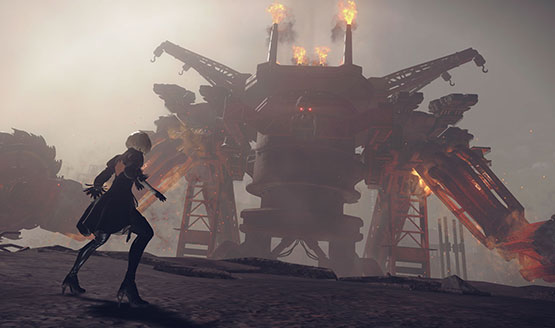
Grace and Chaos
Nier: Automata brings back the same mixed gameplay that helped make the original so enjoyable, and has improved on it tenfold. While the game is primarily played in a three-dimensional third-person perspective, it occasionally switches to either a pseudo two-dimensional top-down or side-scrolling view. Combat is significantly faster-paced than the original, owing to new series developer Platinum Games. It also features shoot-em-up and bullet hell elements, especially during its pseudo two-dimensional sections that sometimes feature combat in flight units. All this in addition to the game’s setting make the mixed gameplay work and fit significantly better than it did in the original.
When fighting as 2B or some of the other playable android characters, players have access to four weapon types – small swords, large swords, spears, and combat bracers – that can be assigned to either the action game standard light or heavy attack, giving players quite the number of options for melee combat. There are a few dozen available weapons in the game and each one have specific light or heavy attack chains, depending where they’re assign them. Light attack chains can also be followed up with a single heavy attack that utilizes both equipped weapons.
Although the chain attacks and combos of melee weapons are enjoyably flashy, the game’s many chaotic battles make it difficult to pull off full chains as players are often forced to alternate between attacking and dodging. Dodging in Nier: Automata is one of the best parts of its combat though. Because while players can typically dodge away from enemies to avoid both melee and ranged attacks, waiting until attacks are split-seconds away from connecting before triggering dodge makes characters perform a special and incredibly flashy dodge move that makes them invincible and gives them access to several powerful and equally flashy counterattacks.
Weapons can be upgraded to improve their damage, lengthen their combos, and sometimes give them special bonuses. Upgrading weapons also unlock the stories behind them called Weapon Stories. Another element from the original that makes a return in Nier: Automata, Weapon Stories add yet another element to the game’s already teeming number of features.
While the playable characters are mostly limited to close-range combat, range combat is made possible with the characters’ Pod companions, small flying robots that act as combat support as well as personal assistants of sorts in the game’s narrative. Players are allowed to equip multiple Pods at once but are limited to summoning and utilizing them one at a time. For combat, each Pod is equipped with a ranged attack such as a machine gun or missile launchers and may also be equipped with a special ability which works on a cooldown. Some of these abilities may be focused on offense, defense, or utility, giving players another level of options in combat. Like weapons, Pods are upgradable if the required materials and currency are acquired.
The game’s multitude of battles can range from senselessly easy to incredibly challenging. In its harder encounters, players are either faced with several tough opponents or a vast number of weaker opponents that attempt to drown you in both melee and ranged attacks. And the boss battles either feature several sequences of bullet hell, shoot-em-up gameplay or singular third-person action combat that will test your reflexes and awareness, both of which play a big role in success in Nier: Automata’s combat.
Nier: Automata also features a hacking mini-game that is used quite a number of times during the game and plays directly into the game’s plot. Featuring classic, top-down bullet hell shooter gameplay, the hacking mini-game can range from quick and simple to fairly challenging. There is also a fishing mini-game that allows players to earn additional gold or find items.
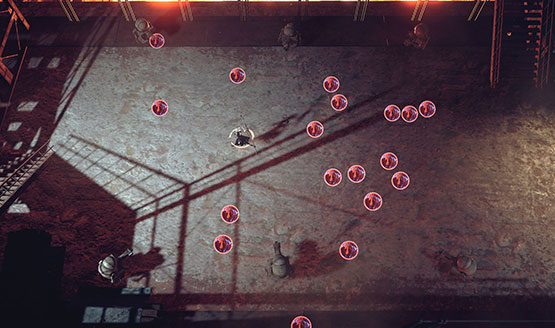
Complete Access
Character progression consists of a leveling system that automatically increases stats and a Plug-in Chip system that players can customize depending on their play style. Plug-in chips are upgrades that can be installed into characters up to an available capacity, which can also be expanded through vendors. There are a wide variety of Plug-in Chips available in the game, from System Chips that control HUD elements such as the HP gauge to chips that improve or add skills and abilities. The chips can be collected from a variety of sources such as chests and enemies and may also be purchased at shops.
While the player can have the game automatically set up Plug-in Chip loadouts that focus on either offense, defense, or utility, players can also completely customize their loadouts, including the option to remove crucial System Chips to disable HUD elements such as the HP gauge. The two options make the system accessible to more casual players while giving those who want to manually increase the game’s difficulty the opportunity to do so.
All the game’s playable characters share experience and levels as well as weapons, plug-in chips, and items. To account for this, the game provides several Plug-in Chip loadouts so players can easily switch if and when the controlled character changes. This makes progression through its playthroughs and chapters more efficient as players no longer need to remake Plug-in chip loadouts or collect new weapons or items for each playthrough or chapter.
Dagger to the Heart
Blanketing and elevating the game’s multitude of experiences is an amazing soundtrack that greatly surpasses the already praised music of the original. The array of vocal and instrumental tracks not only seamlessly transition and flow with each other, they are also almost perfectly timed and fitted to each of the game’s events, ultimately uplifting each moment and giving players a more immersive and deeper experience. Nier: Automata is an excellent example of how music is capable of not only uplifting but also strengthening experiences.
Nier: Automata is a delectable buffet of remarkable experiences that seamlessly and beautifully mesh together. In spite its plethora of elements, the game doesn’t suffer from the sometimes inevitable pitfalls of trying to do too much. This new entry into the series improves on what made the original so great while remedying some of its predecessor’s most glaring weaknesses. PlatinumGames has done an excellent job at taking Yoko Taro’s deep and interesting world and giving it an amazing gameplay experience that fits it perfectly. Fans of the original as well as newcomers to the series will undoubtedly appreciate what Nier: Automata has to offer.
Review code for Nier: Automata provided by publisher. Reviewed on PS4. For more information on scoring, please read our Review Policy here.
-
Amazing combat
-
Great story
-
Beautiful aesthetics
-
Storytelling style may be jarring for newcomers
Nier: Automata info dump
-
Everything You Need to Know
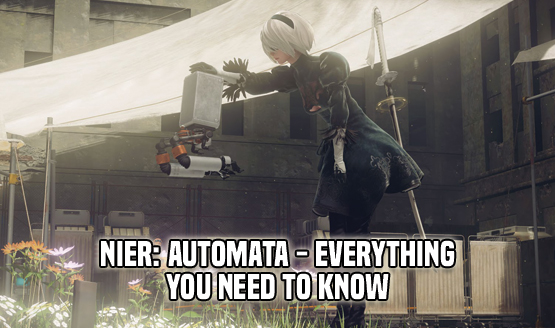
For Nier fans, Automata has been a long time coming. But Platinum’s sequel is almost upon us and rest assured, we’ve covered all bases ahead of its NA launch on March 7 (March 10 for Europe).
-
What is Nier: Automata?
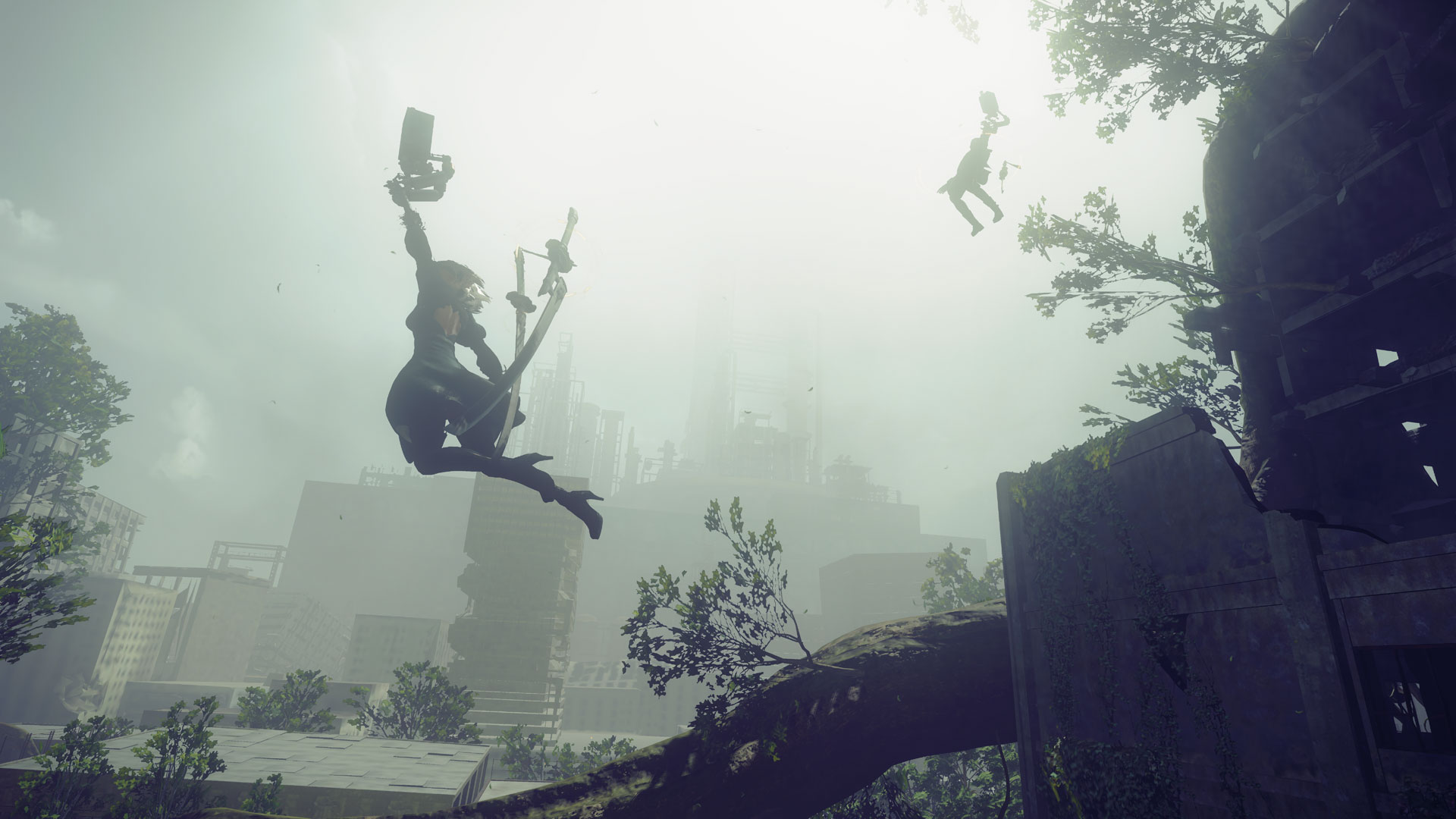
Nier: Automata (or NieR: Automata) is the follow-up to Square Enix’s underrated RPG gem. It’ll pick up the story strands from the game’s fourth ending (more on that later) and is considered a spinoff of the core Drakengard series.
Production began in earnest two years ago and now, Automata is on the verge of its international launch.
-
What’s the Story?
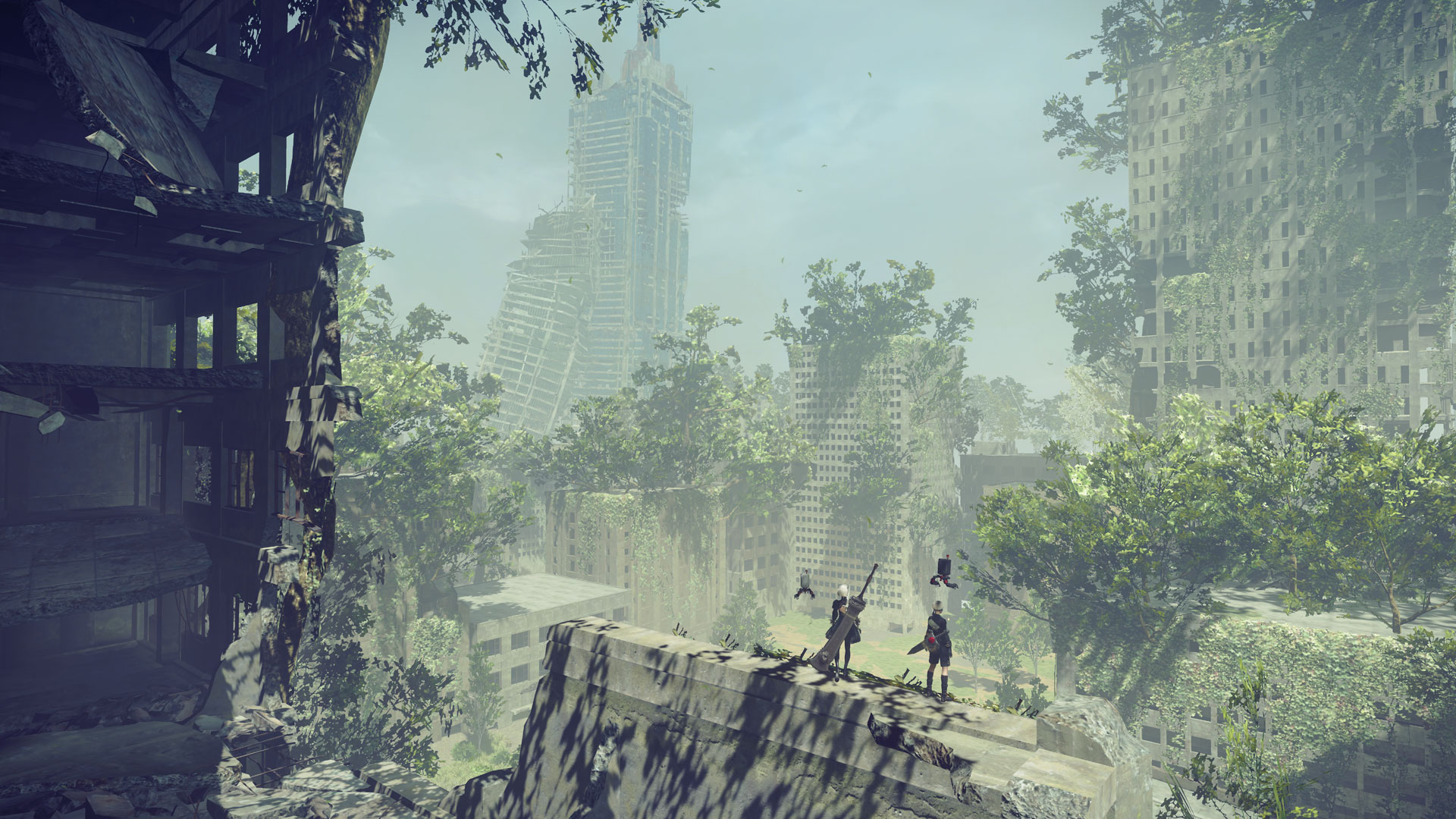
Earth has fallen, and with the remnants of humanity now housed up on the moon, a fleet of android soldiers known as the YoRHa unit -- one headed up by protagonist 2B -- is dispatched onto the field to do battle with those pesky mechanical organisms.
Here's the official logline:
"Invaders from another world attack without warning - unleashing the machine lifeforms. To break the deadlock, a new breed of android infantry is sent into the fray: the YoRHa squad. NieR: Automata is a fresh take on the action role-playing game (RPG) genre that gracefully blends mesmerising action with a captivating story."
-
A World in Ruins
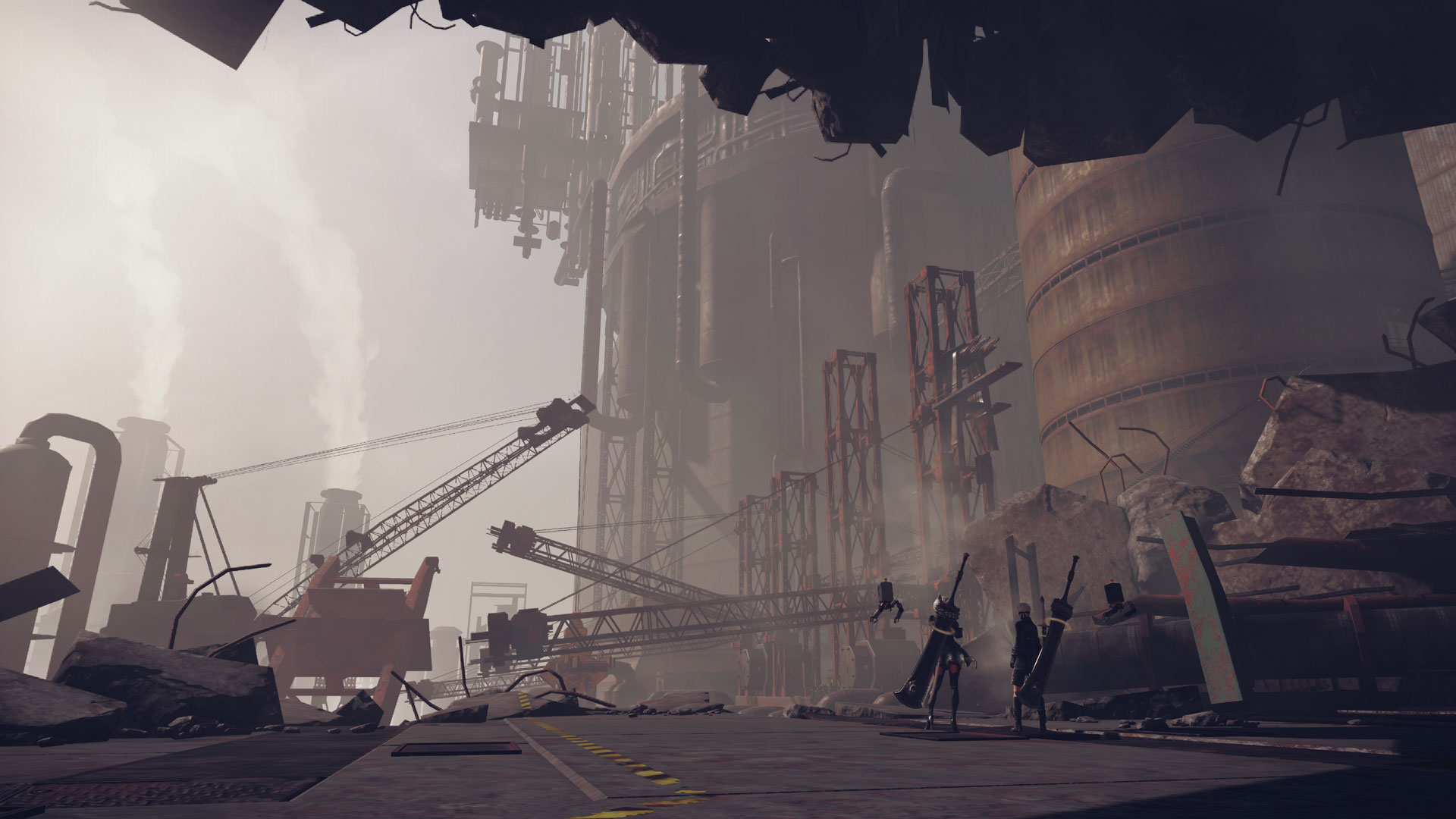
Said to take place around the year 12,000, Nier: Automata promises a captivating story set within a largely uninhabited world. But there's beauty to be found in this apocalypse.
Here's what Square Enix Marketing Lead Francis Santos had to share:
“The world is in ruins, but that doesn’t mean there aren’t hidden caches strewn across the harsh, dystopian landscapes. The game is open world, and with double jumps, mid-air dashes, and super speed, 2B can reach heights and treasures that no mere human ever could.
“Mankind has fled to the moon… but life is not completely gone. Yes, don’t forget about the wildlife that inhabits Earth! Using special items to lure them, you can mount creatures to traverse the world and even attack your foes until they’re scrap metal.”
-
How Does it Play?

It's a third-person action RPG in which you control a battle-ready, emotionless android called 2B.
-
Almost Titled Nier: Android
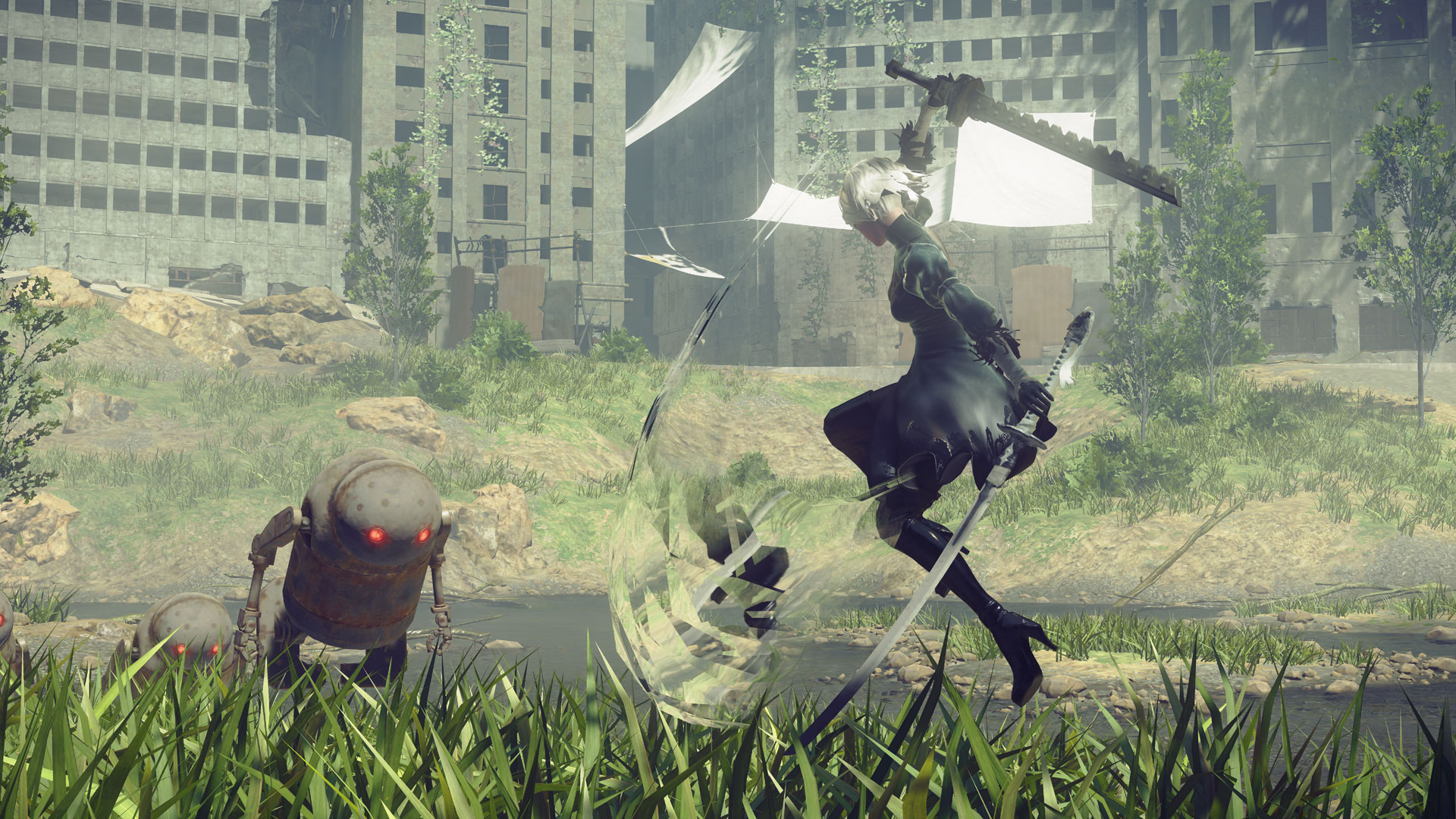
According to Game Director Taro Yoko, Platinum almost settled on the title Nier: Android, before ultimately changing the subtitle to Automata.
"Because it’s a story about androids, I wanted to call it Nier: Android. Obviously Google’s for the trademark [on Android] and we were worried about it. There was no title fixed by the time E3 came, so we had to do the presentation without."
-
How Long is Nier: Automata?
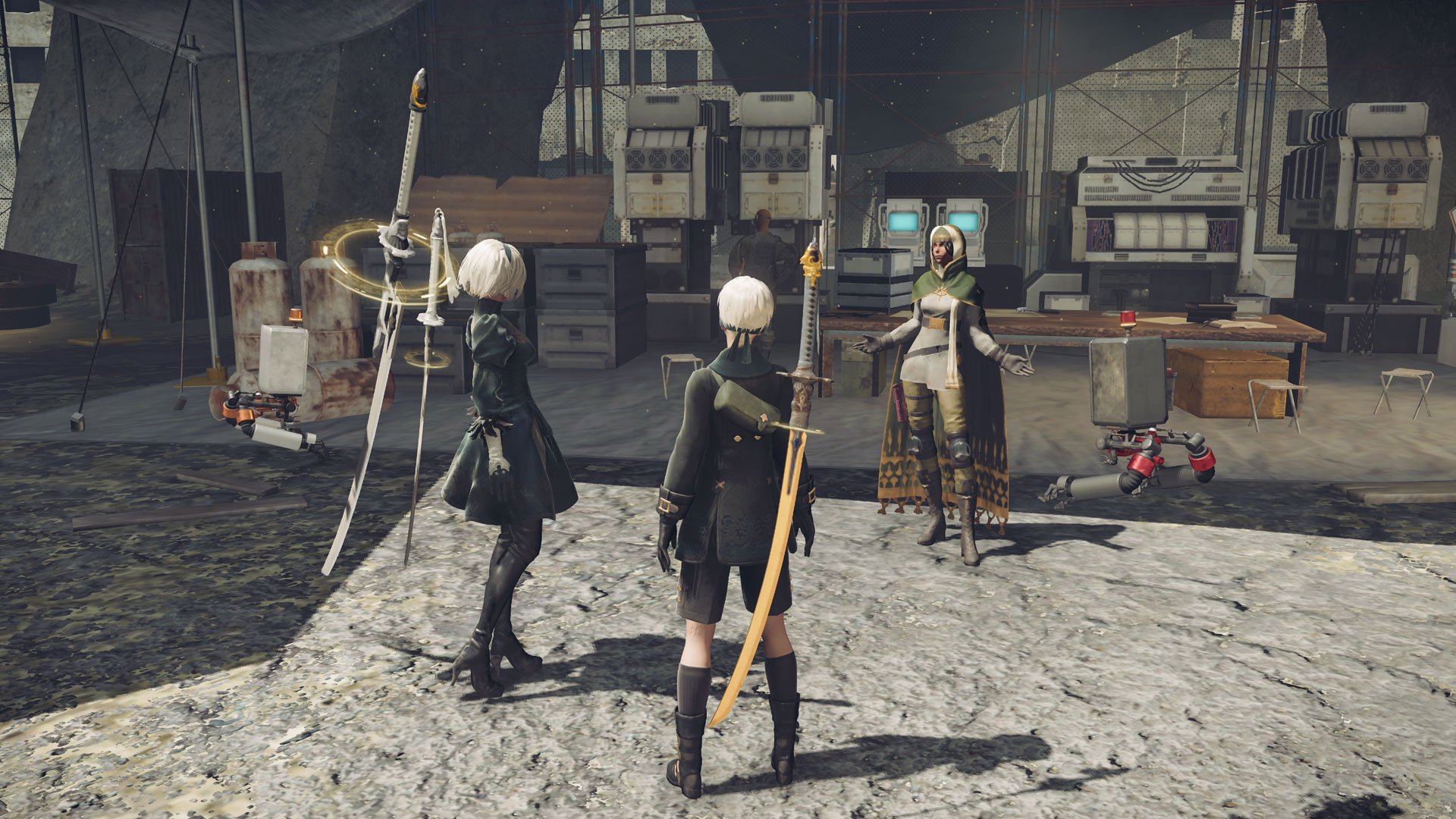
Depending on your playstyle, Series Director Yoko Taro estimates Automata lasts for around 25 hours in total, while completionists can take anywhere between 55 to 60 hours to discover all of the various nooks and crannies.
-
Gone Gold “Long Ago”
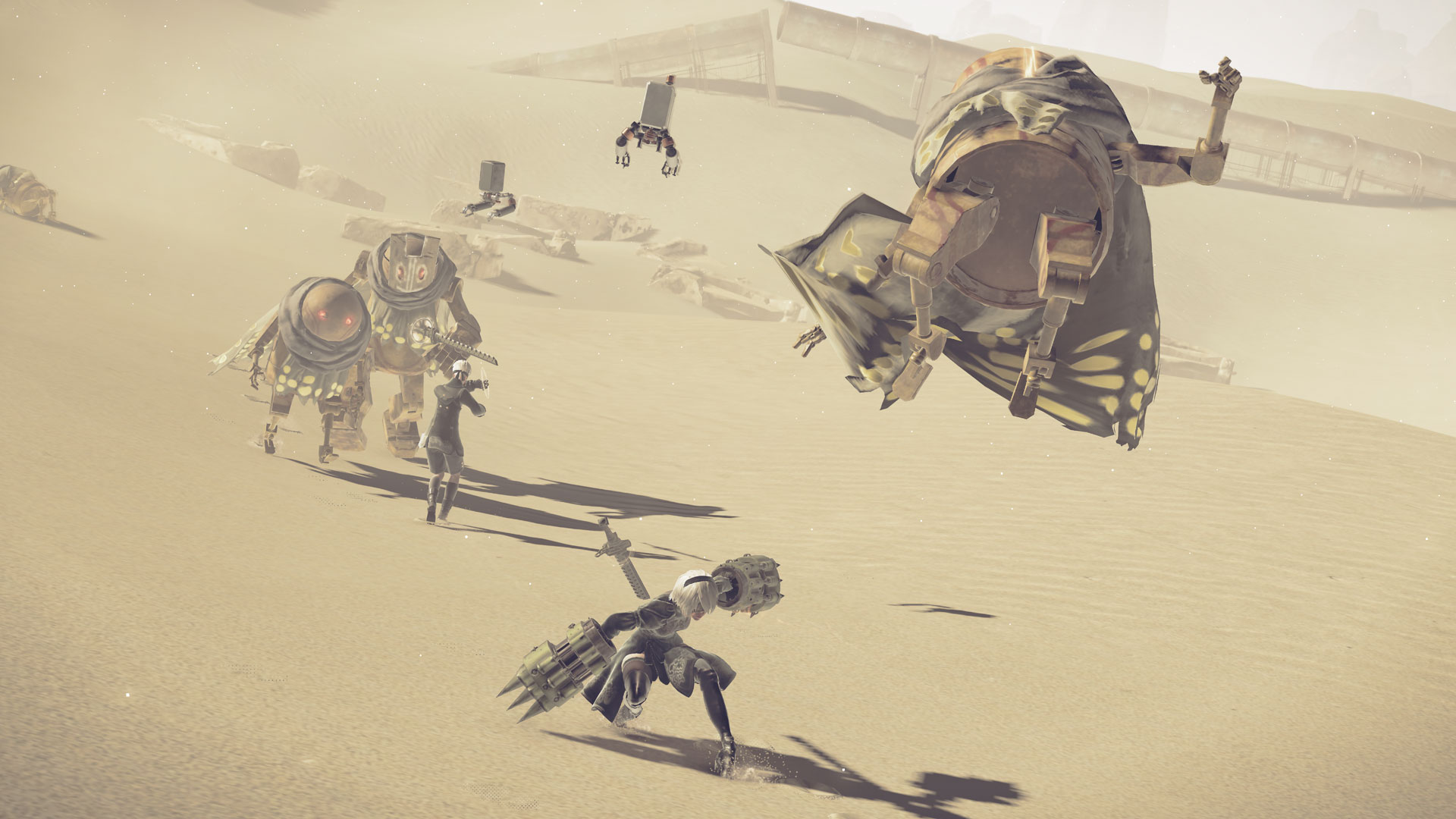
Turns out Nier: Automata has been in the can for a while, after producer Yosuke Saito noted that the action RPG went gold “long ago.” It’s officially locked in for launch across February 23 in Japan, March 7 in North America, and March 10 in Europe for PlayStation 4.
-
Glory to Mankind
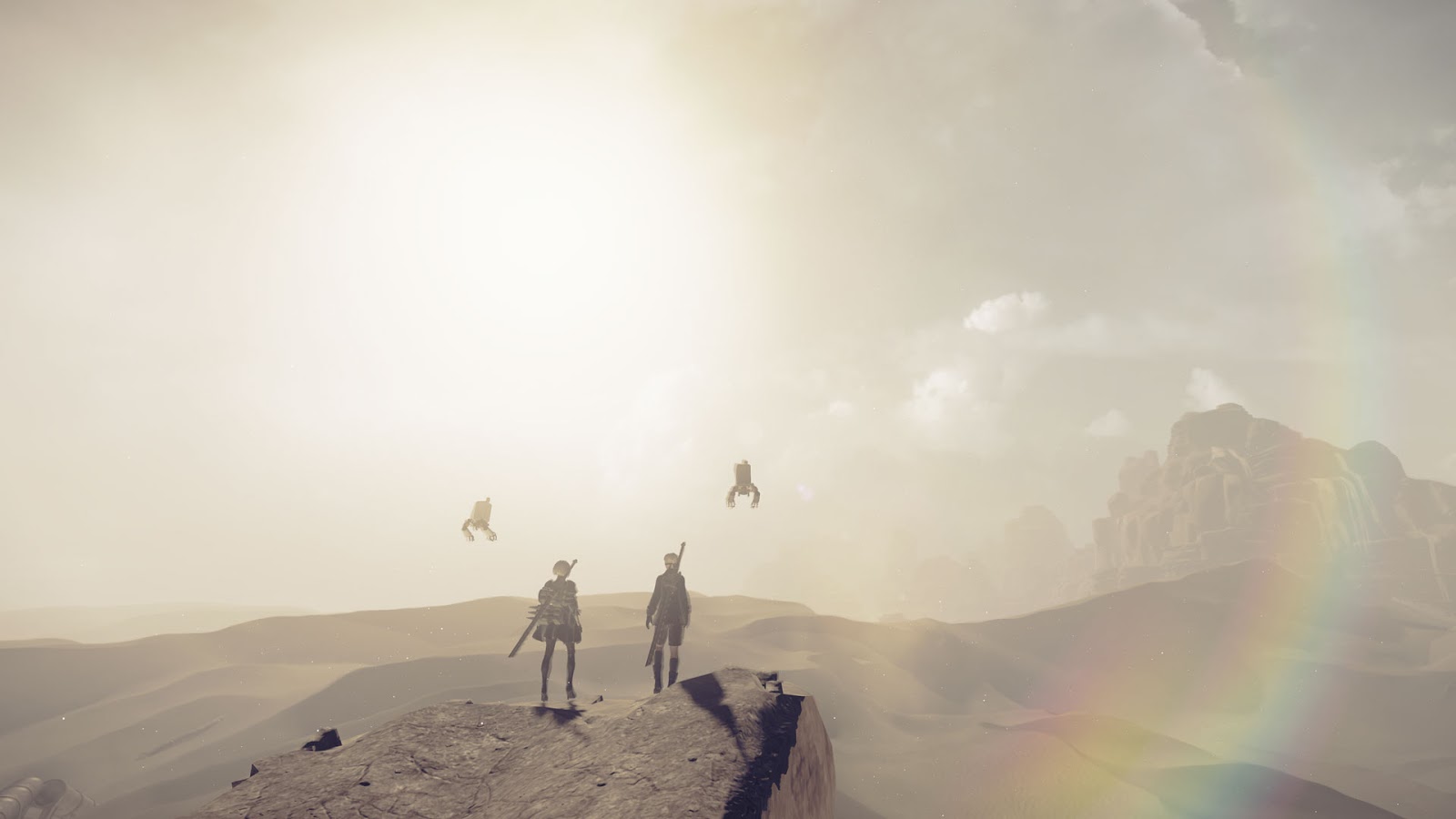
Here, you'll get an extended look at 2B, 9S and A2 in action, along with “their battle to reclaim the machine-driven dystopia overrun by powerful machines.”
-
A Taste of What’s to Come

In anticipation of release, you’ll be able to find a demo build of Nier: Automata on PlayStation Store (North America, Europe). At roughly 4.5GB in size, it’ll chronicle the story of androids 2B and 9S as "they try to reclaim a machine-driven dystopia overrun by powerful machine lifeforms."
-
PS4 Pro Vs. Standard PS4
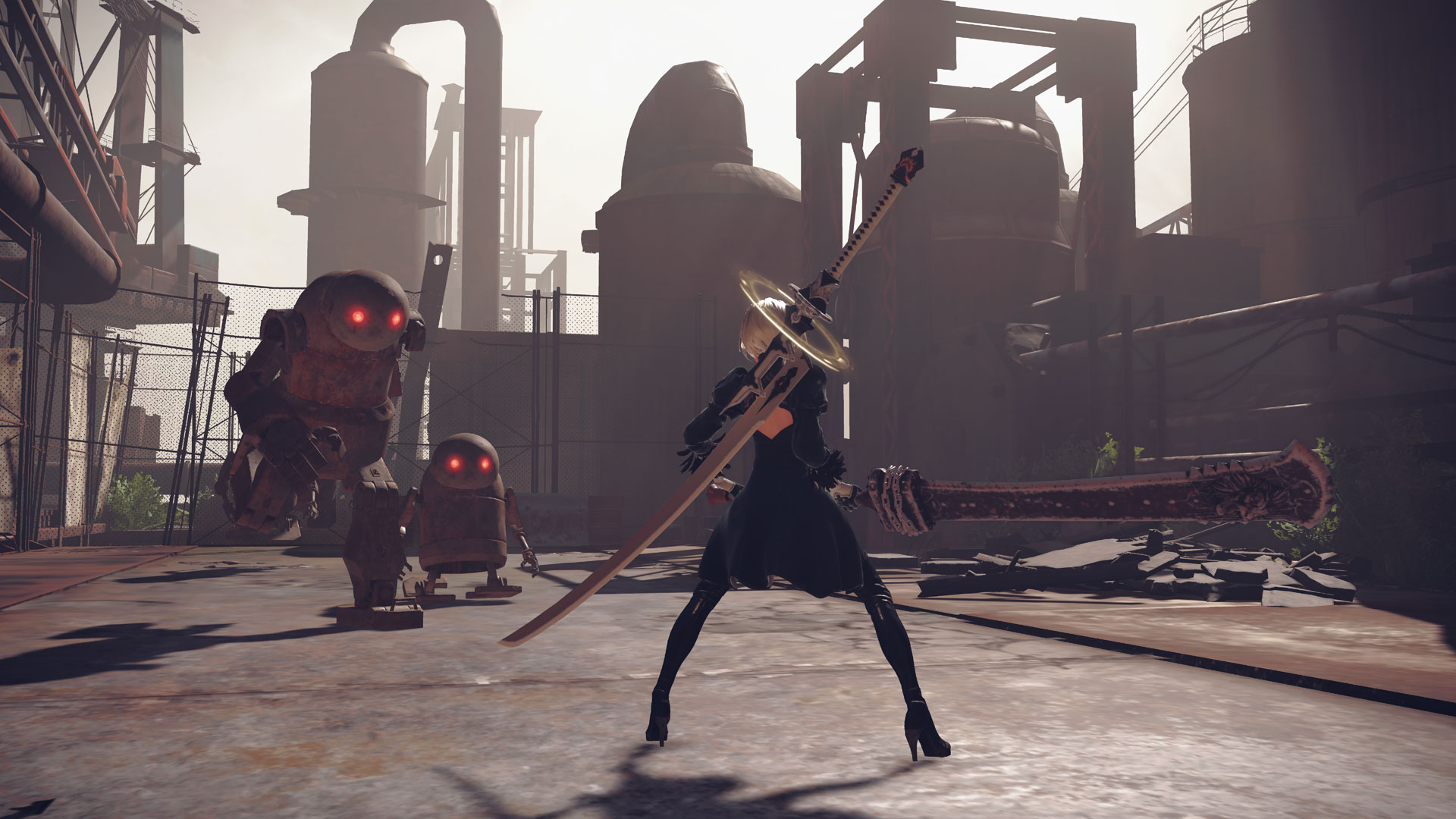
Curious to know the major differences between Nier on PS4 and Pro? Allow Square Enix to clue you in:
"If you’re a PS4 Pro owner, NieR: Automata will run at 1080p/60fps, complete with improved lighting & shadows. On a standard PS4, it will run at 900p/60fps."
-
Extended Gameplay Demo
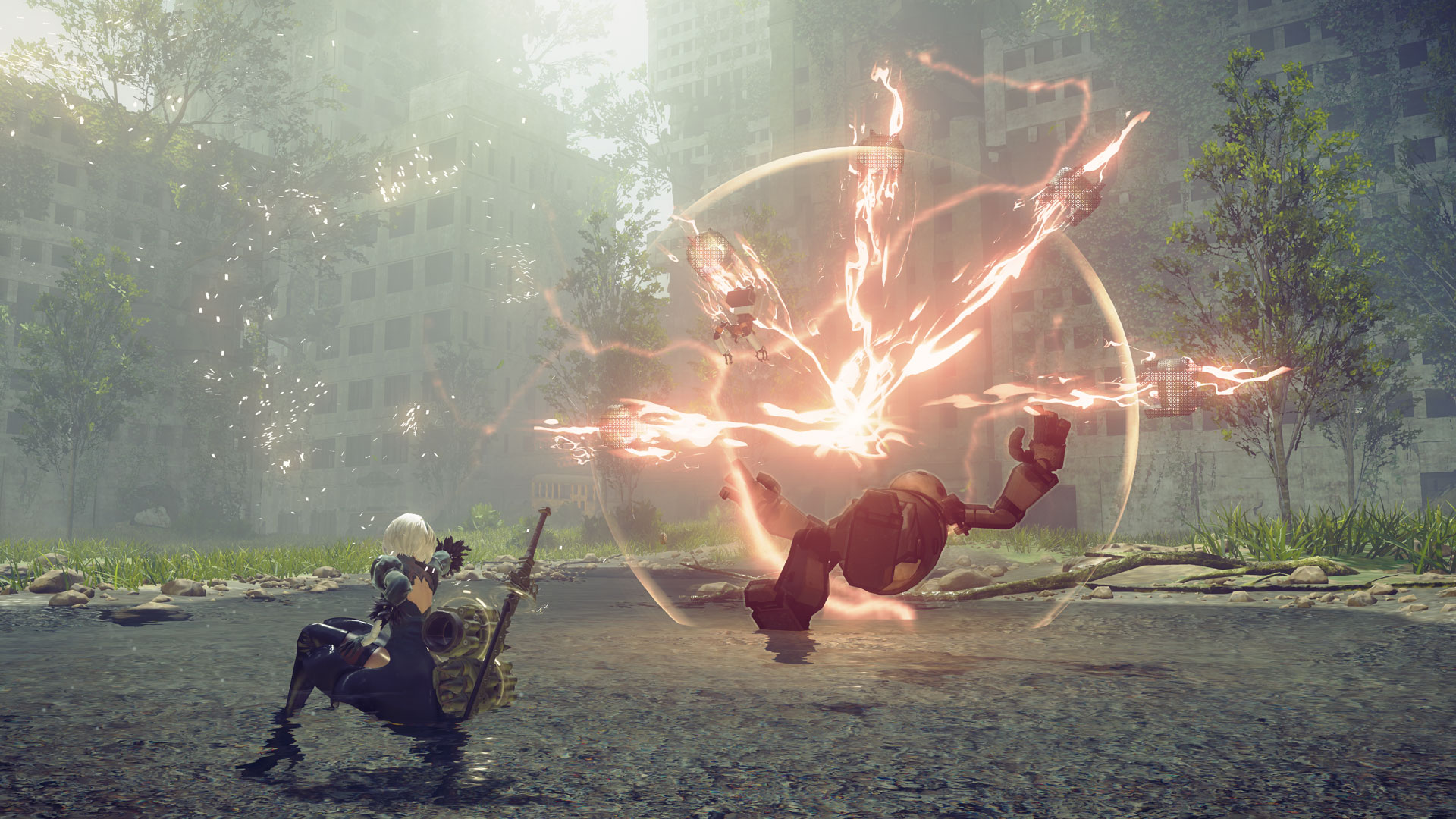
In the latest episode of PlayStation Underground, the folks over at PlayStation Blog sat down with members of Square Enix to present a 29-minute demo of Nier: Automata.
-
Even More Gameplay
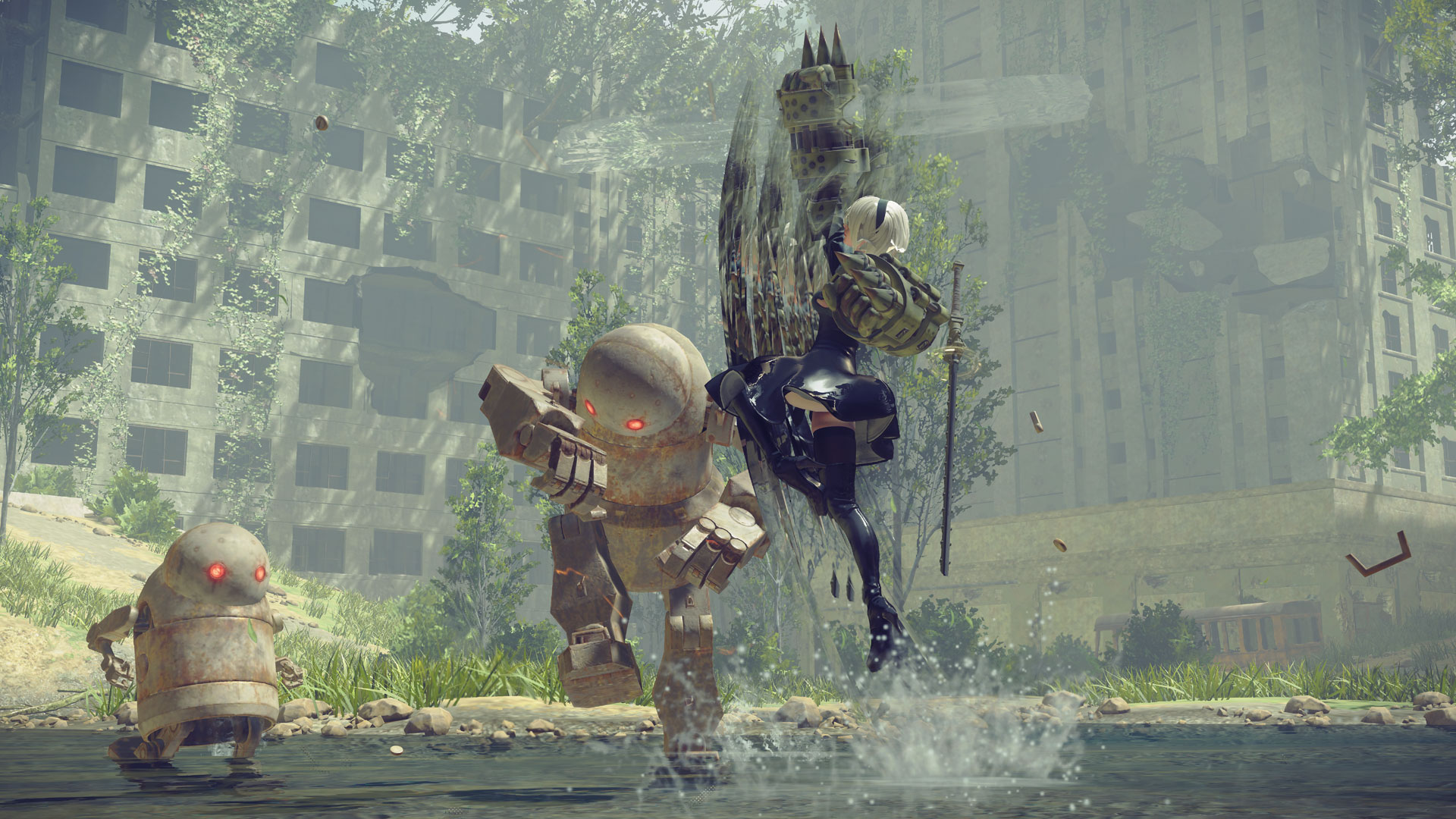
Because sometimes a 29-minute long demo isn't enough, there's also an extended gameplay video that spotlights Nier: Automata's many features.
Here's an overview:
- 11:54 to 23:10 – Demo Gameplay
- 24:17 to 34:22 – Sub-Quest and Bug Explanation
- 35:53 to 50:44 – Plug-In Chip Explanation
- 50:44 to 58:04 – Collaboration Weapons Gameplay
-
Platinum Doubles Down on Quality
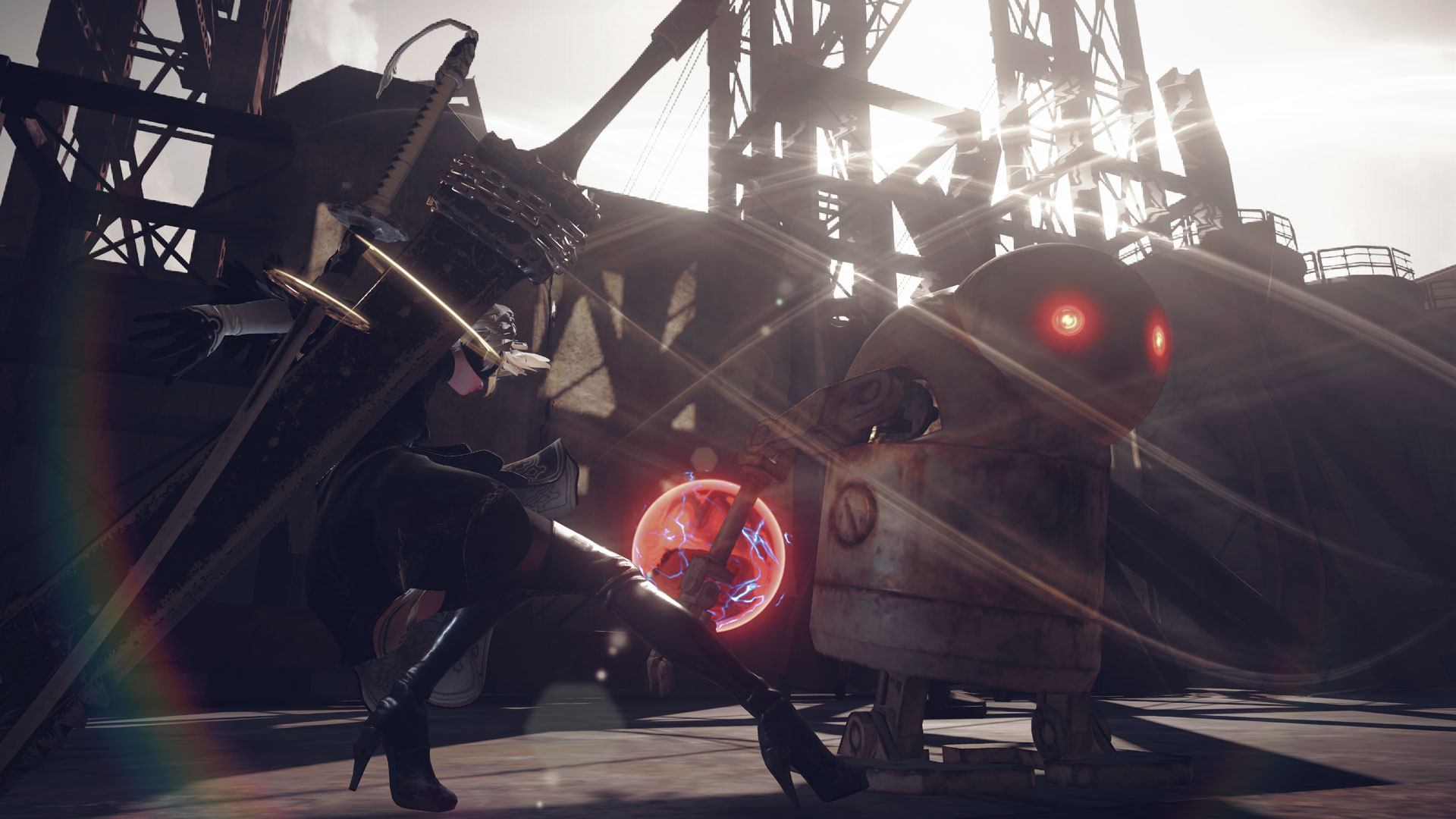
In light of Scalebound's cancellation back in January, Platinum released an official statement in which the developer doubled down on its commitment to "high-quality games."
"Going forward, we will strive to continue delivering high-quality games to you, starting with NieR:Automata in March, and including products like GRANBLUE FANTASY Project Re:Link and LOST ORDER [both only confirmed for Japan so far] in the future.
"We will keep working hard to meet your expectations and we look forward to your continued support!"
-
Quirky to the Core
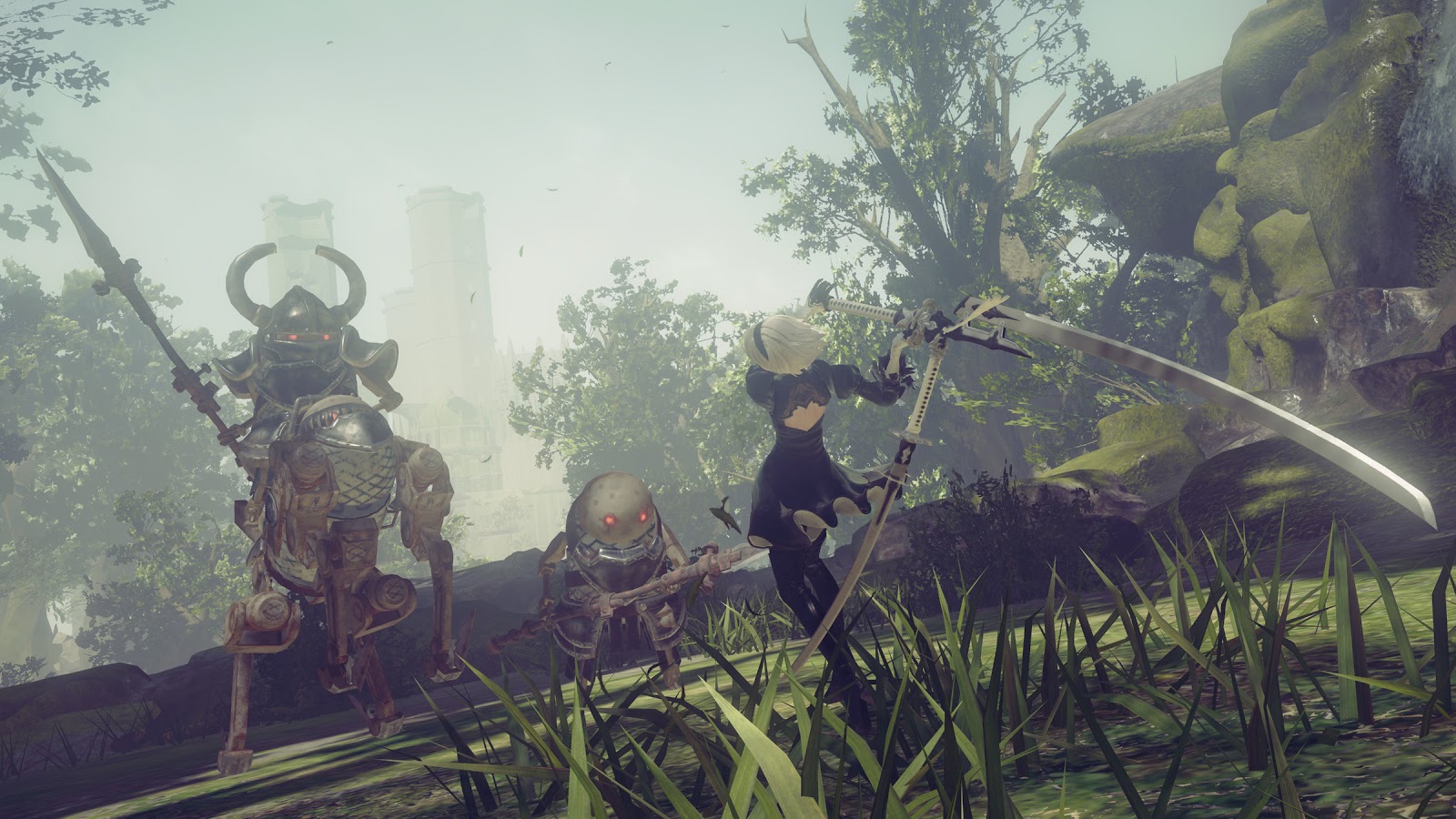
Maintaining the quirky spirit of the original, Square has fully embraced Nier: Automata's status as a genre oddity, as evidenced by the recent pre-order video.
-
Cheeky Controversy
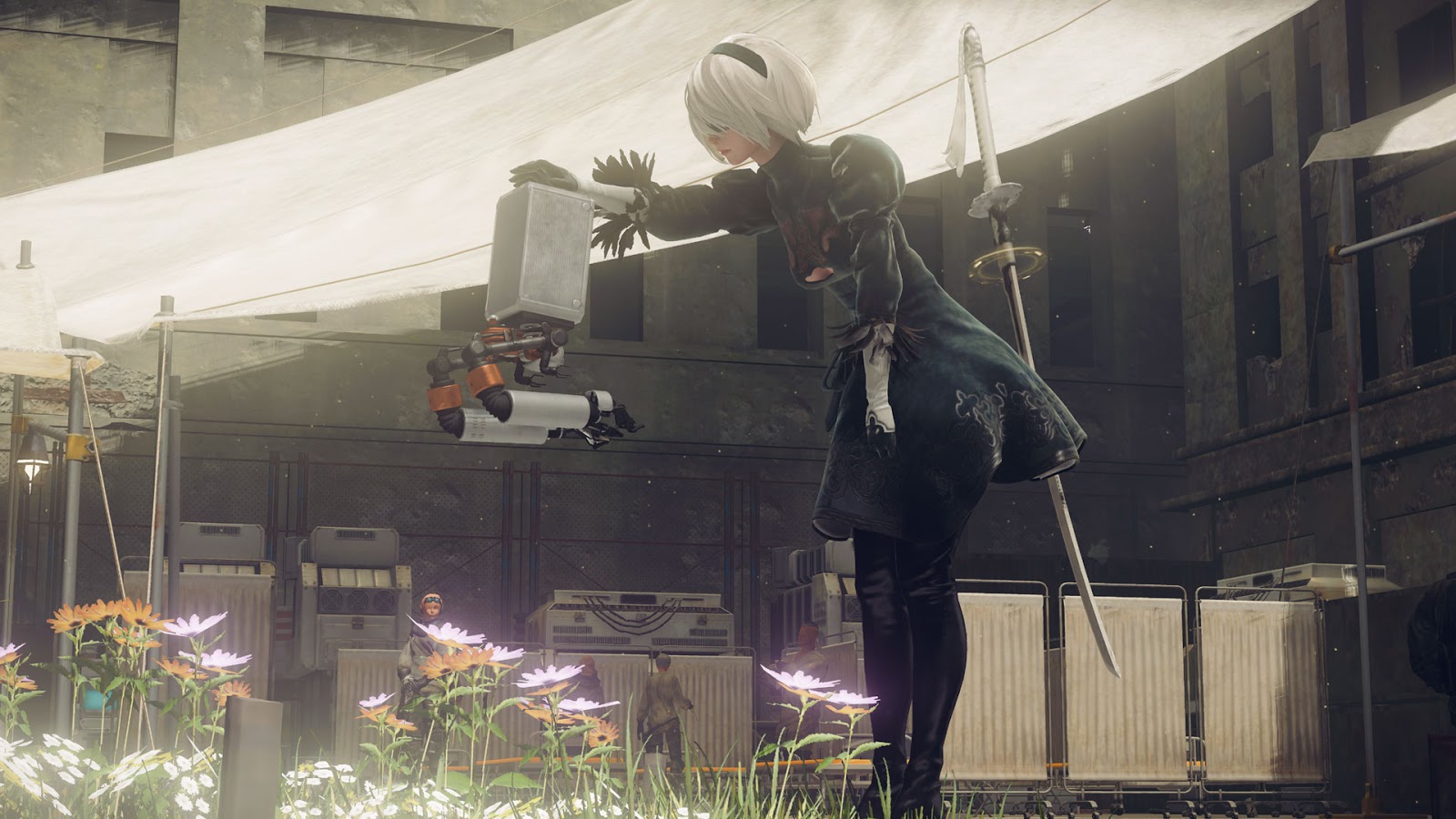
Following the launch of January's demo, Yoko Taro tackled the recent 'butt' controversy surrounding the character of 2B. As it happens, it turns out the image in question was Photoshopped, leading Taro to claim that:
"Due to the 2B butt controversy, many outrageous drawings are being made. Collecting them to share individually is a pain. It would be great if we can group them together to make it easier to distribute them every week."
-
A Delightful Soundtrack
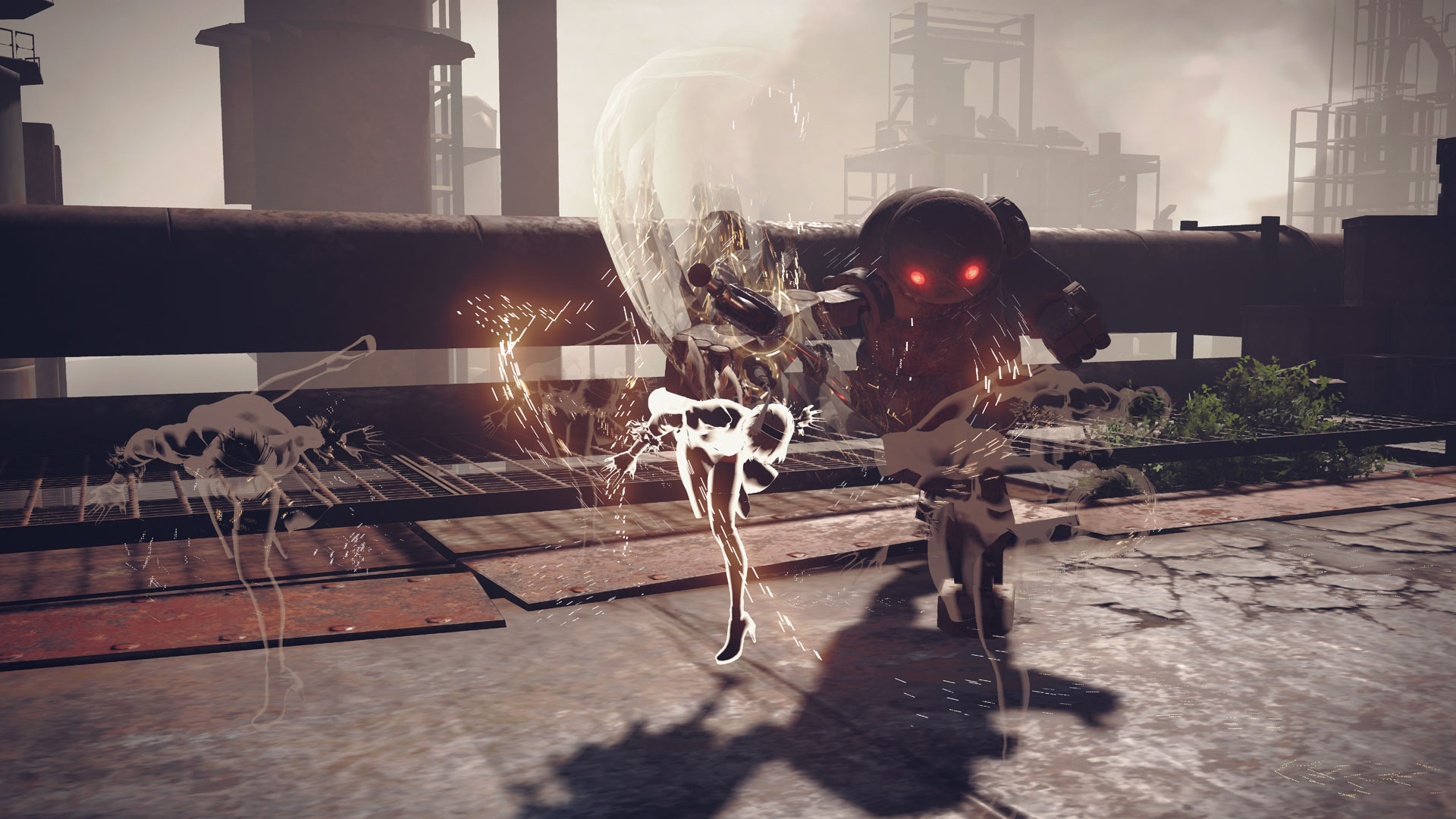
If you played the original Nier, you'll be pleased to hear that Emi Evans and composer Keiichi Okabe are joining forces once again for Automata's soundtrack.
You can get an early sample of that haunting score here.
-
Nier Remaster Not Off the Table
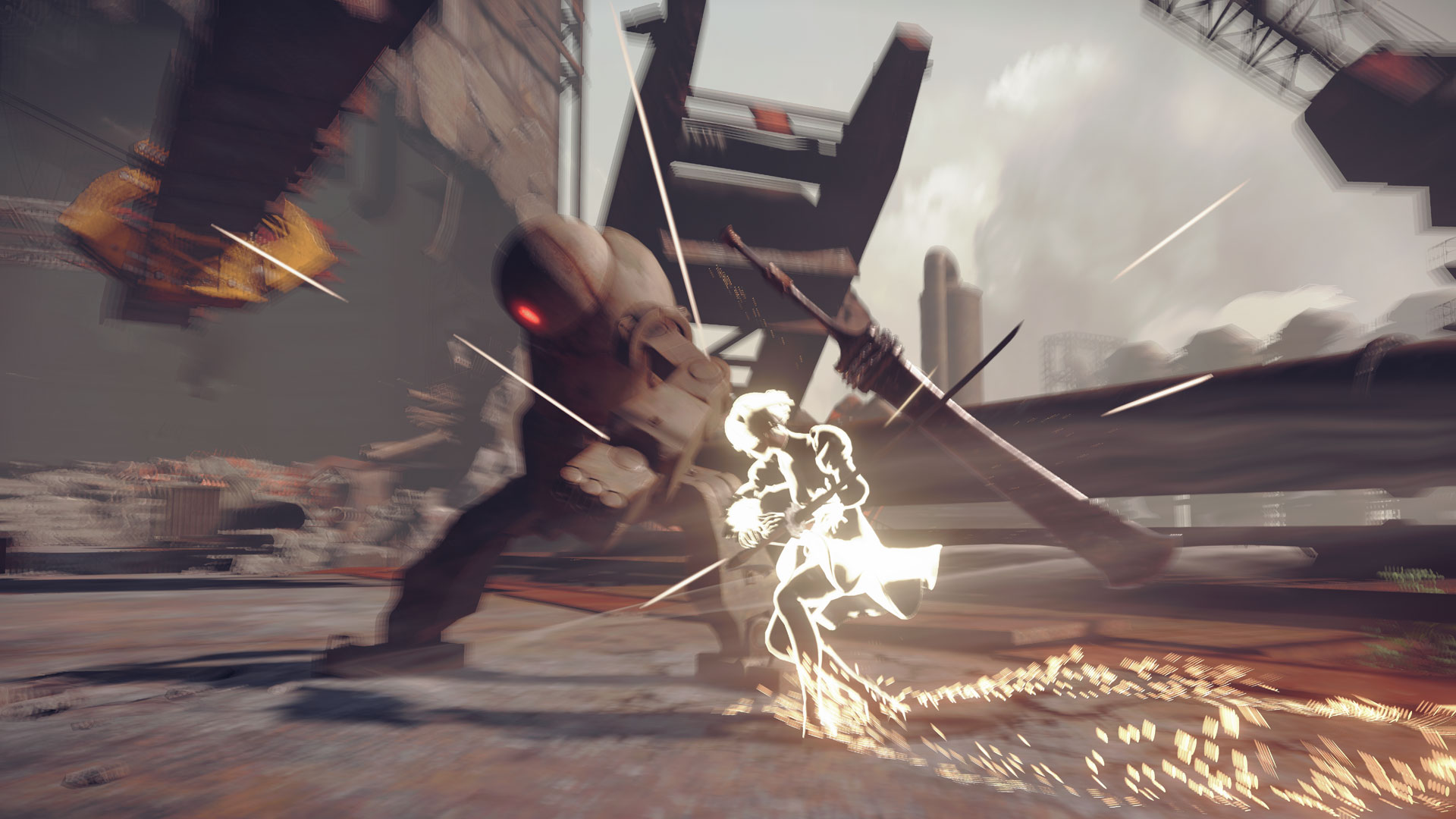
Can Automata generate enough interest in a PS4 port of the original Nier? It's not off the table, it seems, with Producer Yosuke Saito noting that “there is a very high possibility if Nier: Automata sells like hotcakes, yes.”
-
PC Port Inbound; Xbox One Up For Question
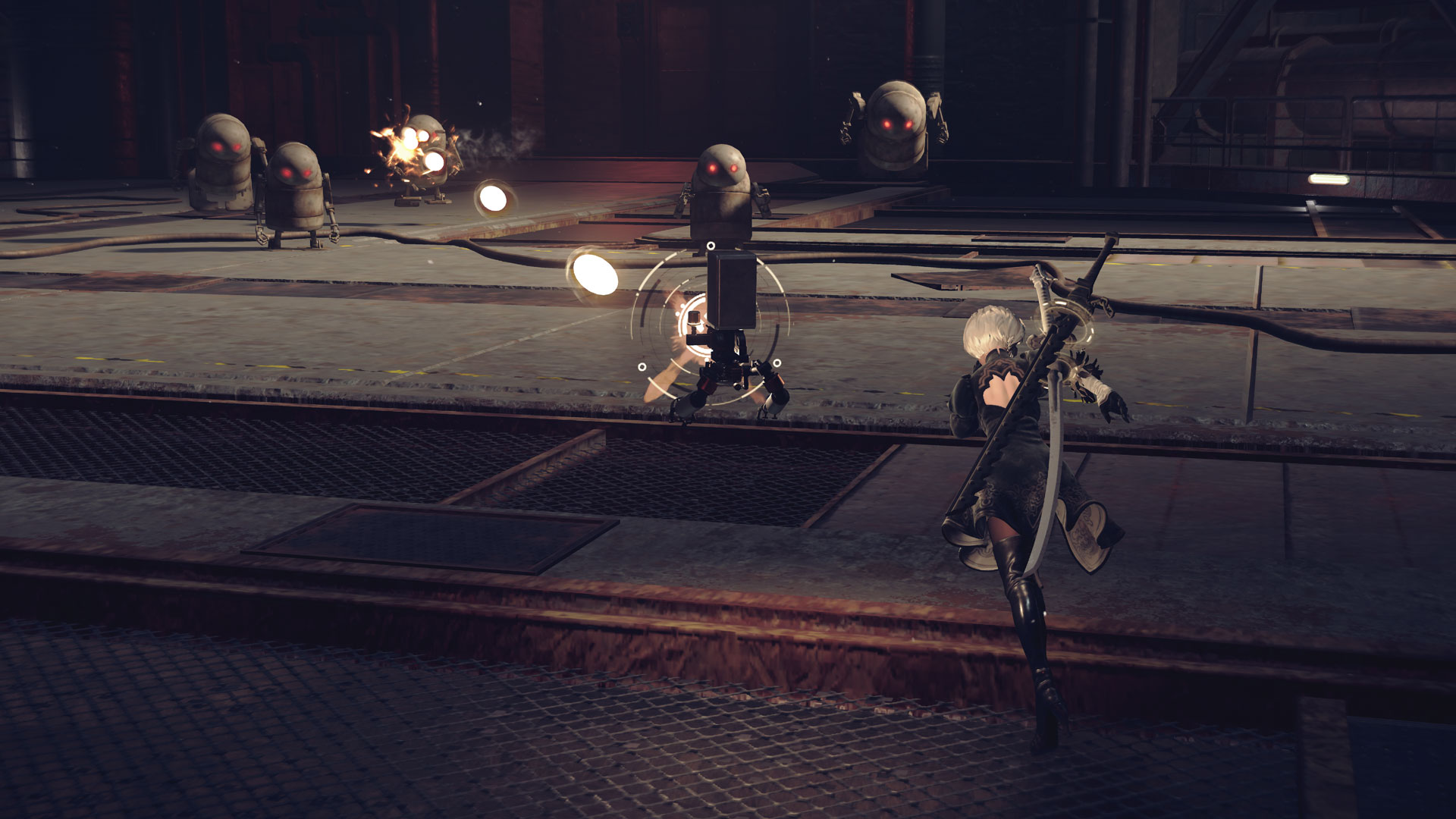
Despite the original Nier launching fro Xbox 360 back in 2010, so far Automata remains exclusive to PS4 and PC. When quizzed about why this is, Producer Yosuke Saito noted:
“The main reason for this is that the Japanese market for Xbox One is not strong, so the decision was made to focus on PlayStation 4 rather than to split our efforts across two platforms. The biggest benefit to developing on one platform is that we did not have to split our time, allowing us to focus more on the quality. It is not about whether one platform is better than the other, it’s that from a development point of view were can devote more time to one platform.”
-
Trophy List

In anticipation of Automata's launch, Exophase has uncovered the RPG's official Trophy list, which you can find through here.
News of Nier's accolades came hand-in-hand with a new gameplay trailer, one designed to spotlight weapon types, combo system, and battle mechanics.
“The game will feature four weapon types available to protagonist 2B (small swords, large swords, spears and combat bracers) that can be switched mid-combo to maximize 2B’s range of abilities and effectiveness. Players can also unlock a diverse arsenal of weapons and upgrades to the player’s Pod support system to enhance their gameplay.”
-
Going Broke, the JRPG Edition
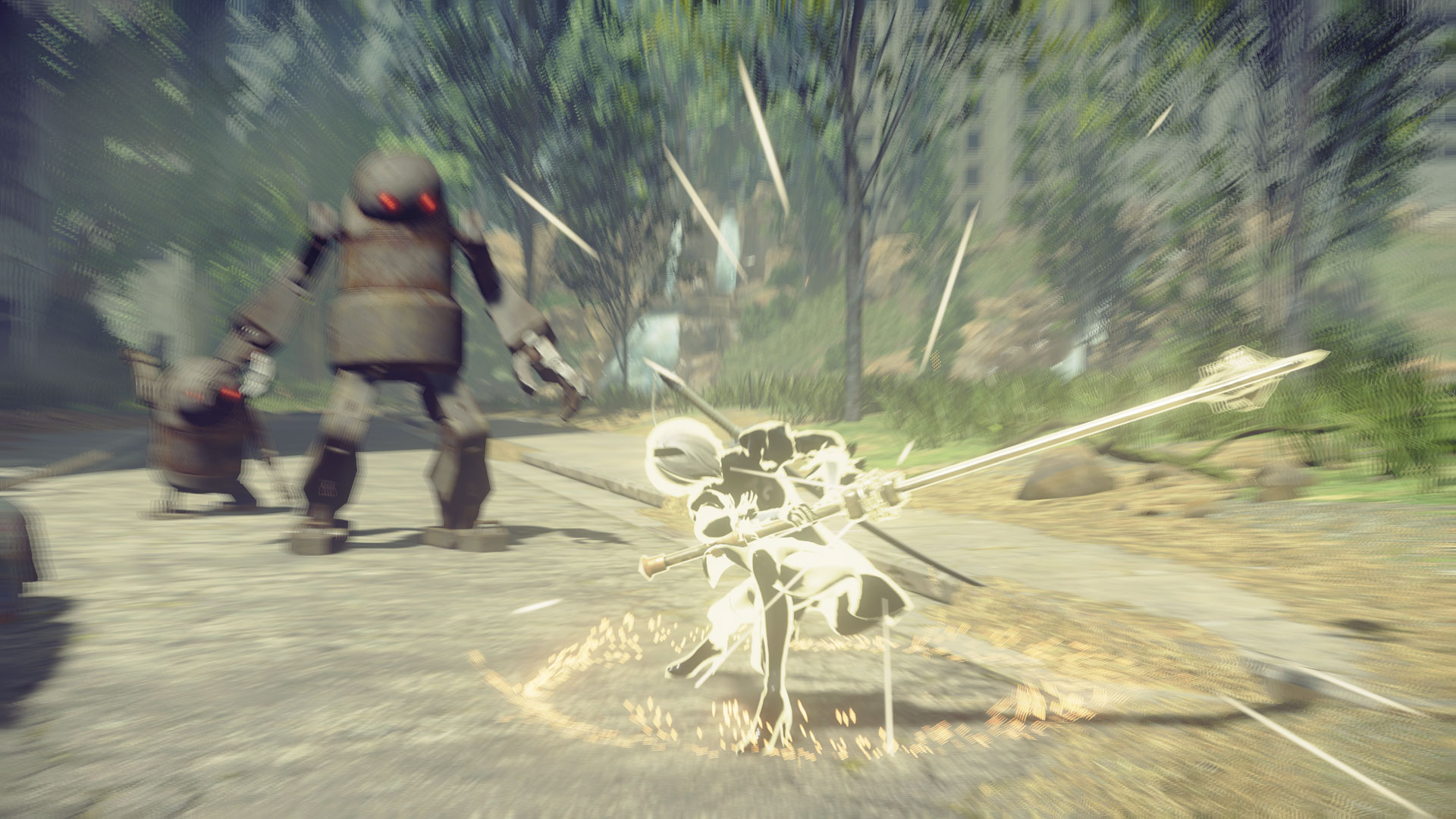
In previewing the current slate of JRPGs, our own Cameron Teague pinpointed the many Japanese role-playing games set to reduce his wallet to a dusty old husk. Nier: Automata was once such JRPG that made the cut.
-
Black Box Edition
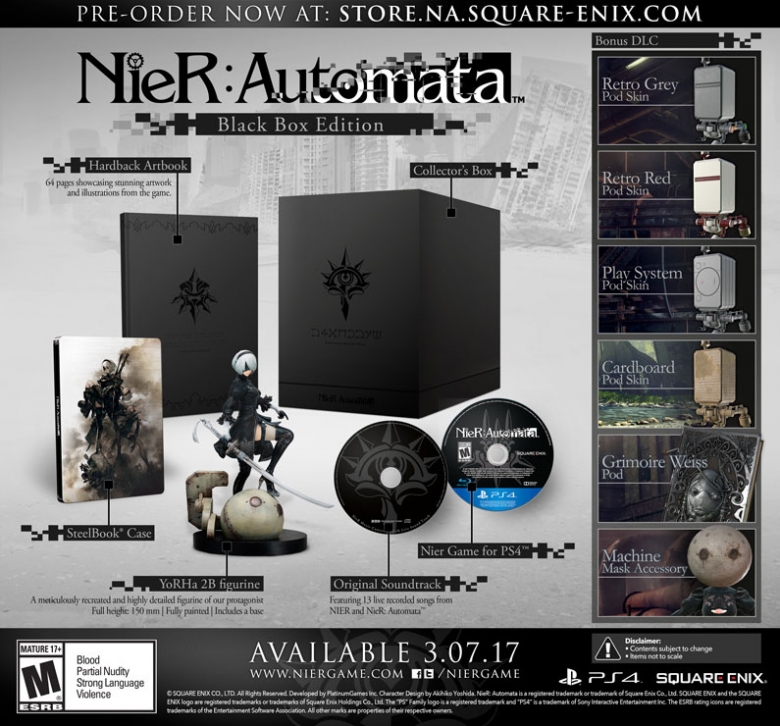
Priced at $189.99, Automata's Black Box edition comes packing the following odds and ends:
- A sleek black Collector’s Edition box housing the below exclusive content.
- The Nier: Automata game.
- Exquisitely crafted YoRHa “2B” Figurine.
- Hardback 64-page artbook detailing the stunning artwork and illustrations from the game.
- Exclusive steelbook case featuring artwork from renowned Akihiko Yoshida (Final Fantasy XIV / Bravely Default).
- Hauntingly beautiful soundtrack containing 13 live recorded songs from Nier and Nier: Automata, composed by veteran Keiichi Okabe from Monaca, Inc. (Tekken / Drakengard / Nier).
- All Day One Edition digital content, including: Machine Mask Accessory, Grimoire Weiss Pod, Play System Pod Skin, Retro Grey Pod Skin, Retro Red Pod Skin, and Cardboard Pod Skin.
-
Day One Edition
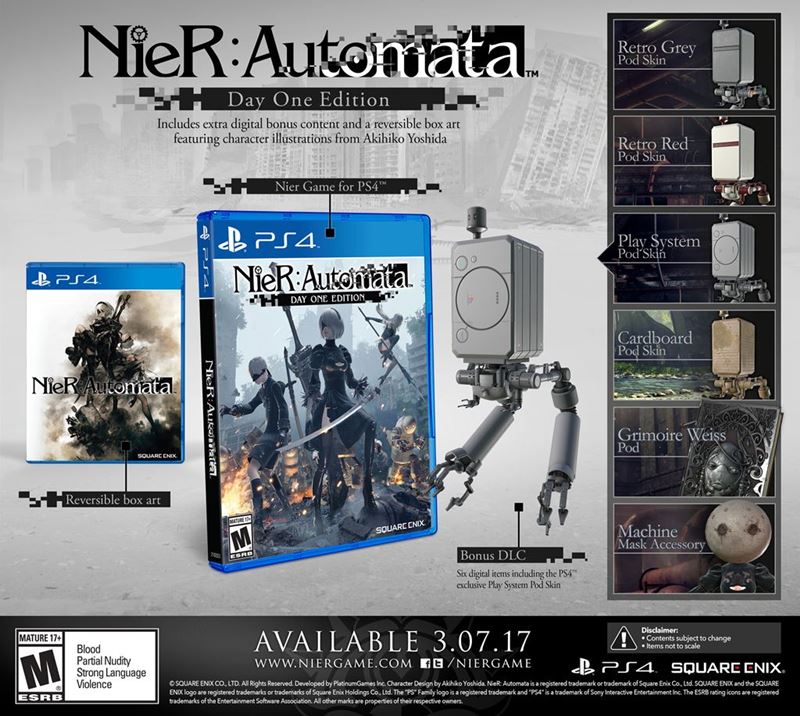
Bundling together six pieces of exclusive digital content, Nier: Automata's Day One Edition ($59.99) includes:
- The Nier: Automata game.
- Six pieces of exclusive digital content, including: Machine Mask Accessory, Grimoire Weiss Pod, Play System Pod Skin, Retro Grey Pod Skin, Retro Red Pod Skin, and Cardboard Pod Skin
-
Our Review
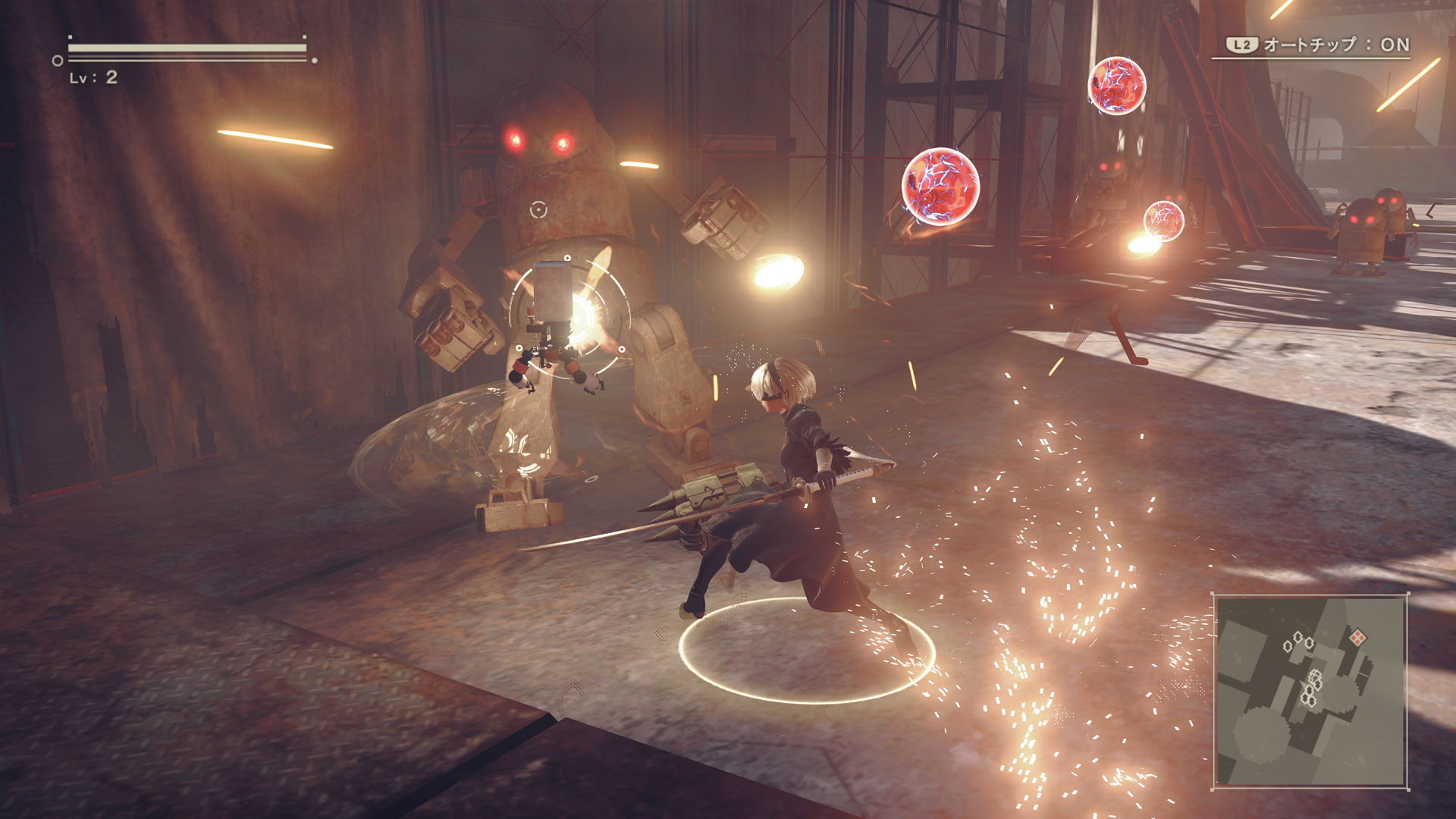
No word yet on when Automata's review embargo lifts, but we'll update this gallery if and when Square Enix nails down a concrete date.
